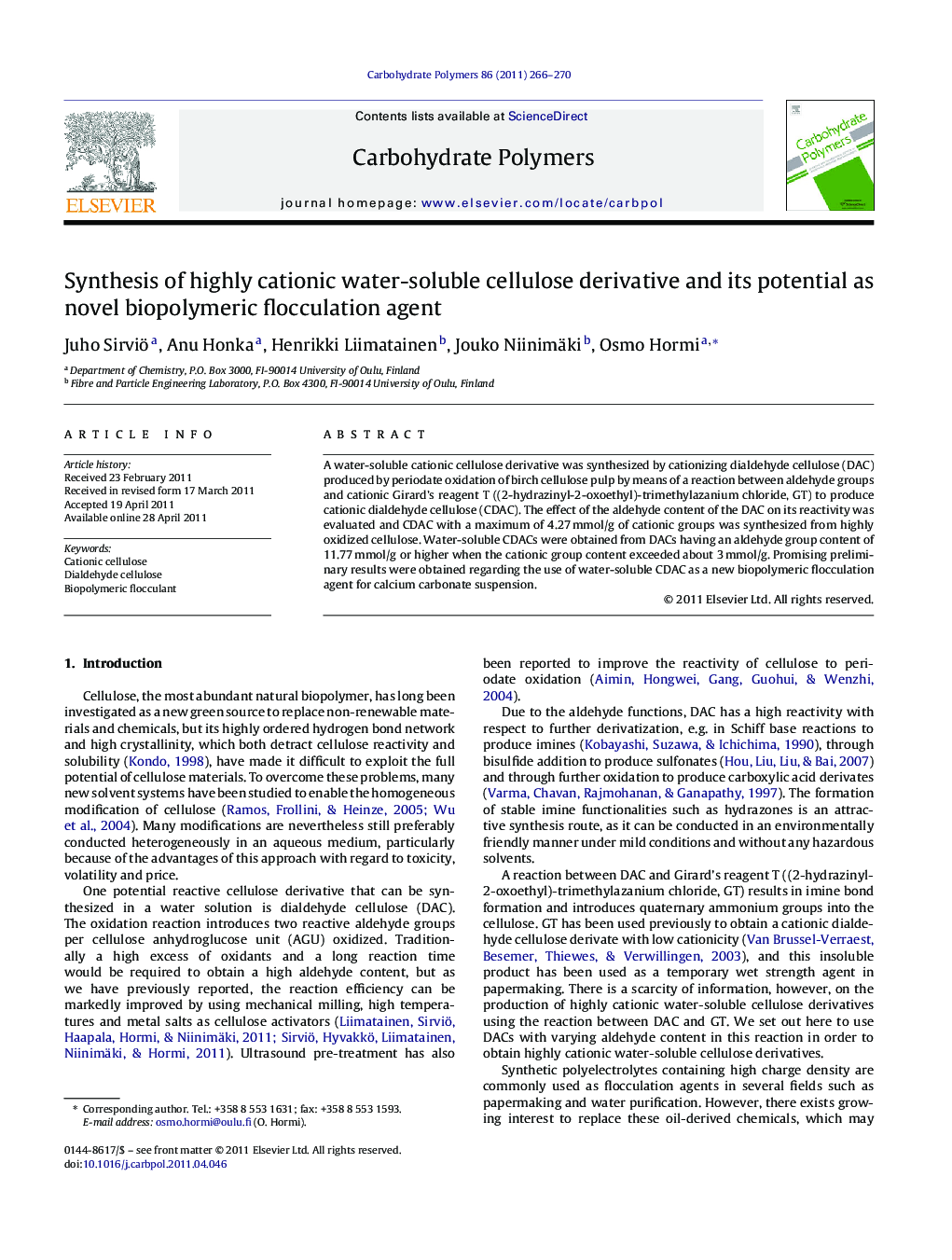| Article ID | Journal | Published Year | Pages | File Type |
|---|---|---|---|---|
| 10602136 | Carbohydrate Polymers | 2011 | 5 Pages |
Abstract
A water-soluble cationic cellulose derivative was synthesized by cationizing dialdehyde cellulose (DAC) produced by periodate oxidation of birch cellulose pulp by means of a reaction between aldehyde groups and cationic Girard's reagent T ((2-hydrazinyl-2-oxoethyl)-trimethylazanium chloride, GT) to produce cationic dialdehyde cellulose (CDAC). The effect of the aldehyde content of the DAC on its reactivity was evaluated and CDAC with a maximum of 4.27Â mmol/g of cationic groups was synthesized from highly oxidized cellulose. Water-soluble CDACs were obtained from DACs having an aldehyde group content of 11.77Â mmol/g or higher when the cationic group content exceeded about 3Â mmol/g. Promising preliminary results were obtained regarding the use of water-soluble CDAC as a new biopolymeric flocculation agent for calcium carbonate suspension.
Related Topics
Physical Sciences and Engineering
Chemistry
Organic Chemistry
Authors
Juho Sirviö, Anu Honka, Henrikki Liimatainen, Jouko Niinimäki, Osmo Hormi,
